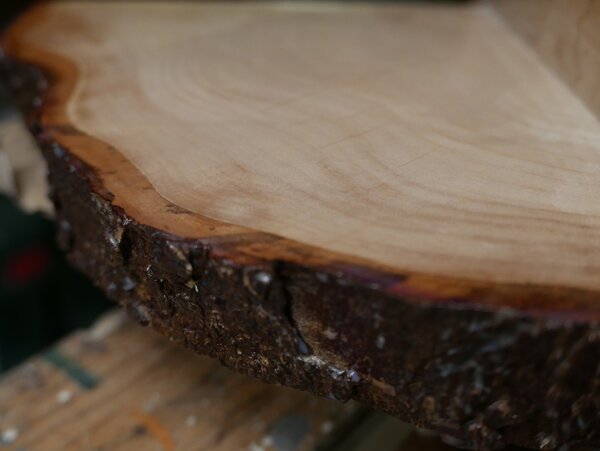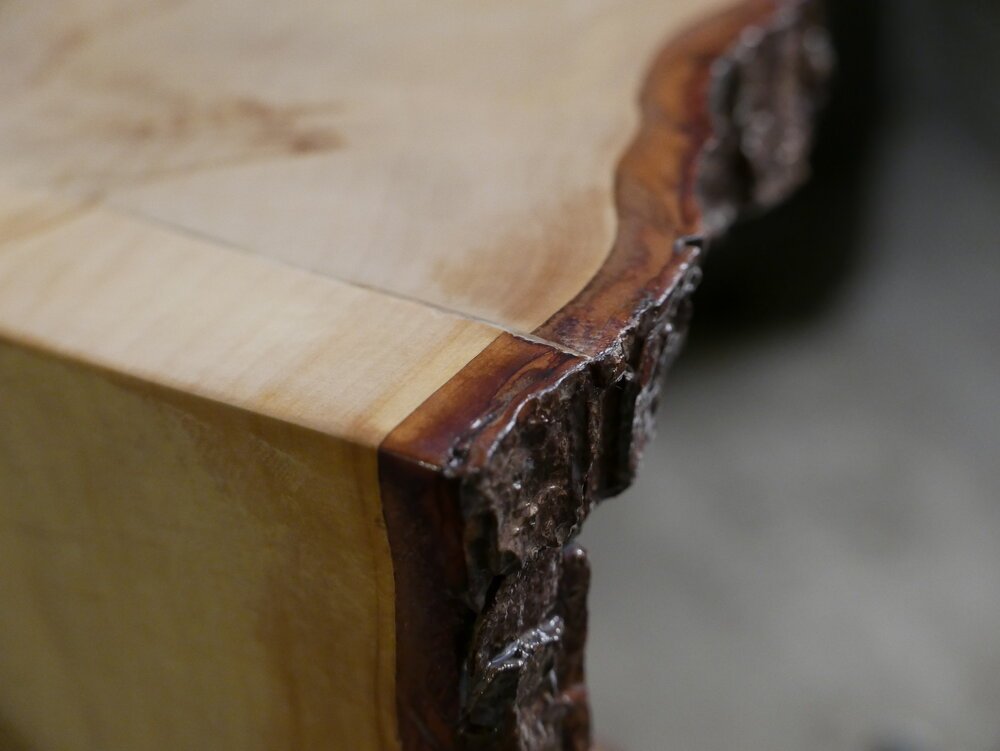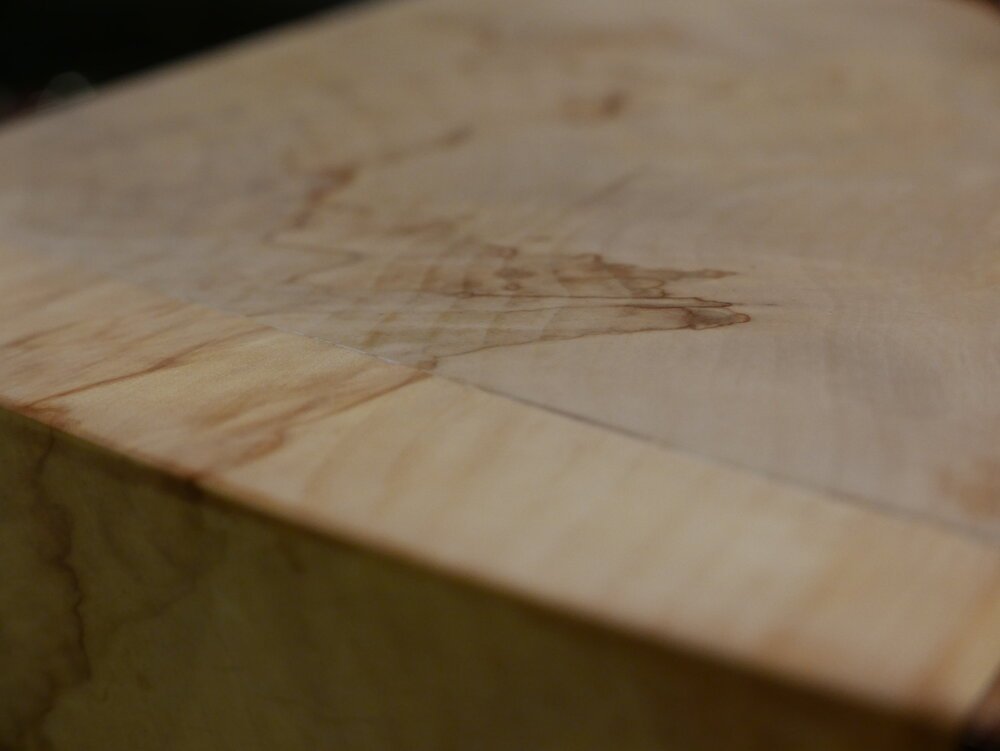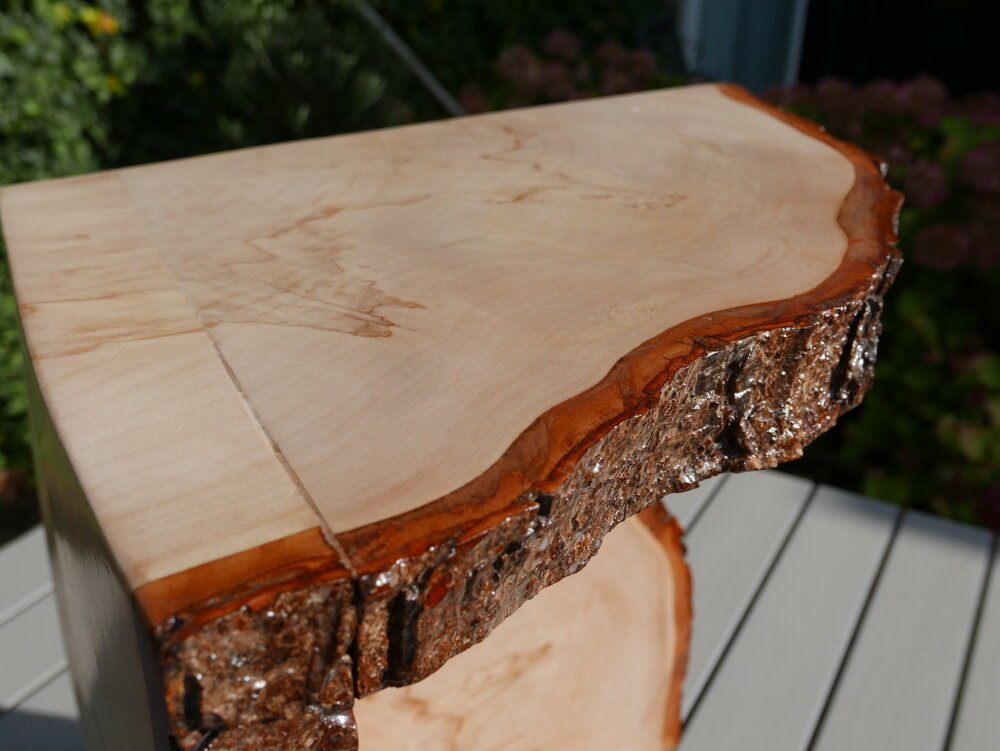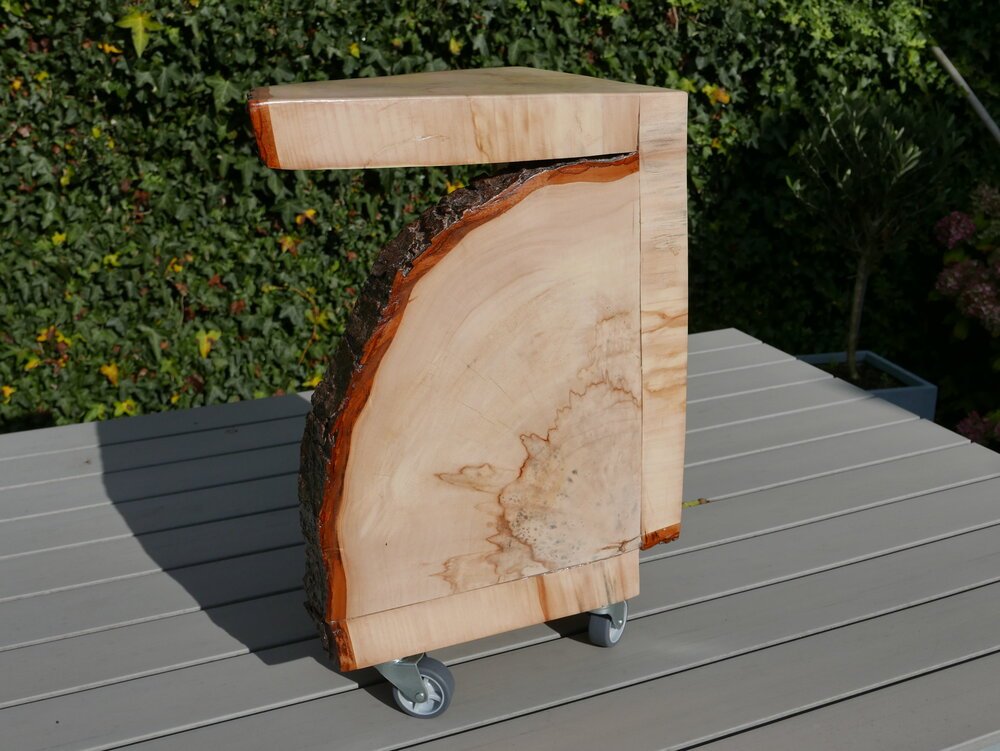Oct. 23, 2017
From tree to table
Designing and creating a night stand
Right next to the house were I was born there was this chestnut tree, sadly it died one and a half year ago. When it was taken down, my brother saved me a slab of wood. I intended to create something from it, a nice "do it yourself" adventure, worthy of a blog post!
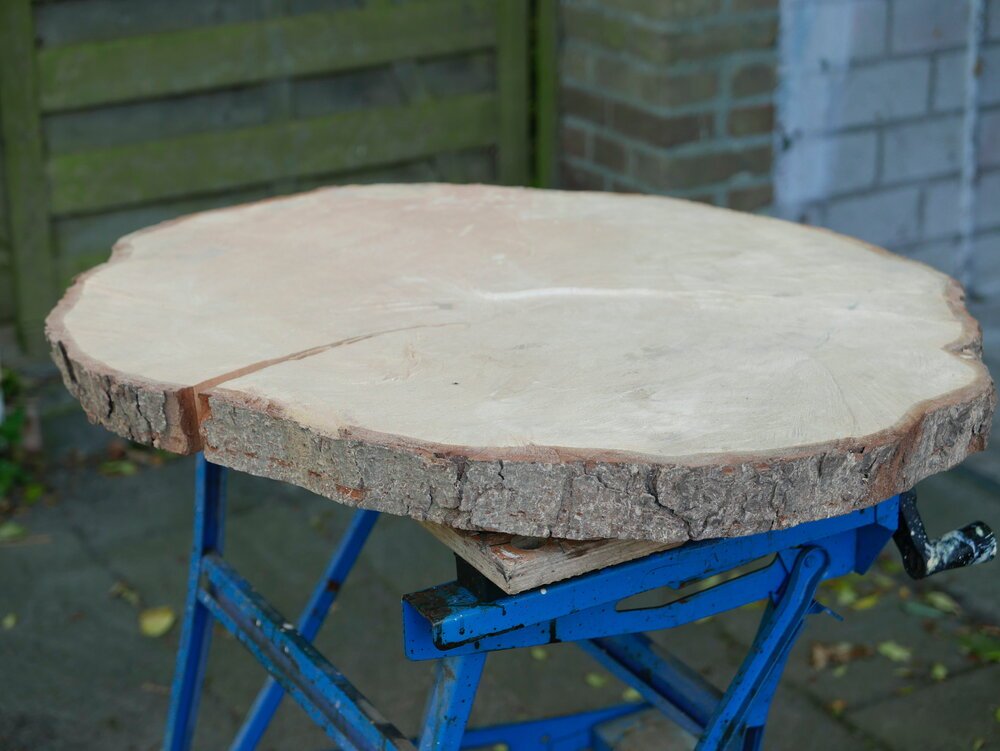
Designing a night stand
I wanted to create something from the three that I would use frequently. It turned out to be a night stand, a small table next to my bed. To make things interesting I set out a few design objectives:
- use the entire slab of wood
- do not use screws or metal for the structure
- the "tree" should be visible in the end result
- about 50 centimeters high
Before doing anything I measured the slab of wood. With the measurements I worked out a design that would use the circular shape of the slab to achieve the appropriate height.
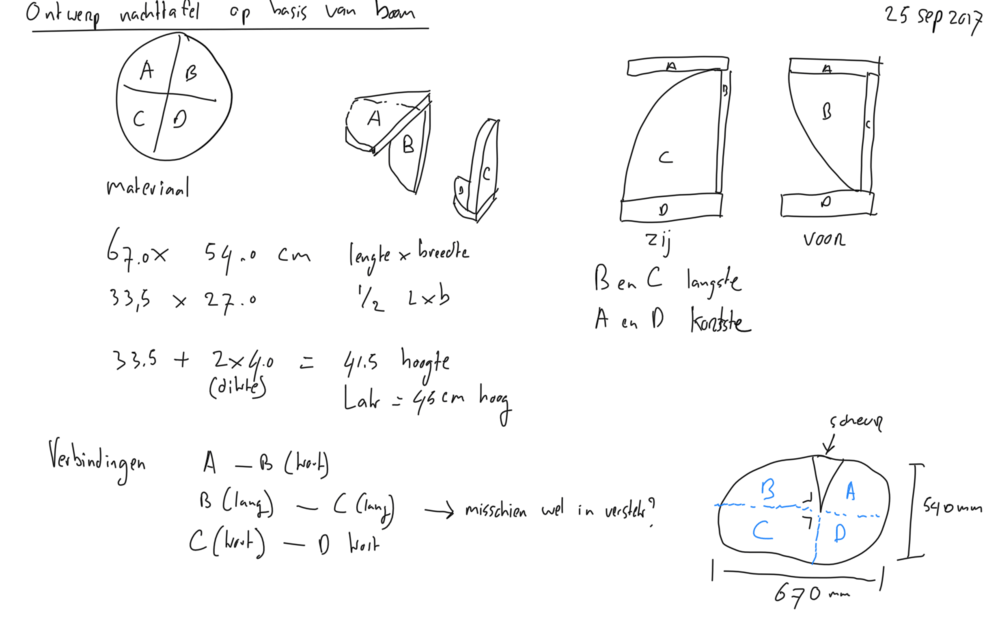
The slab contained a large crack that I had to work around. Basically the design cuts the slab into four pieces (right along the crack). The pieces are bonded together to create a "folded slab design". If done well - the idea was - I would not need any metal parts to support the structure...
Smoothening the slab
My brother used a chainsaw to get me this slab of chestnut tree. The chainsaw left a lot of marks on the wood that I had to smoothen.
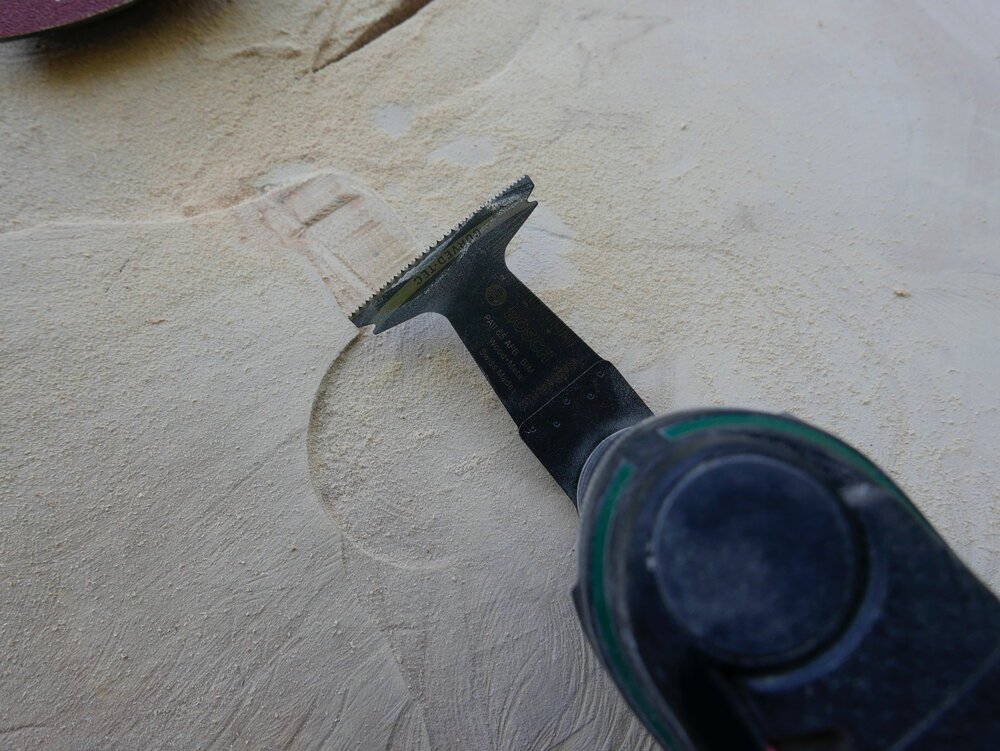
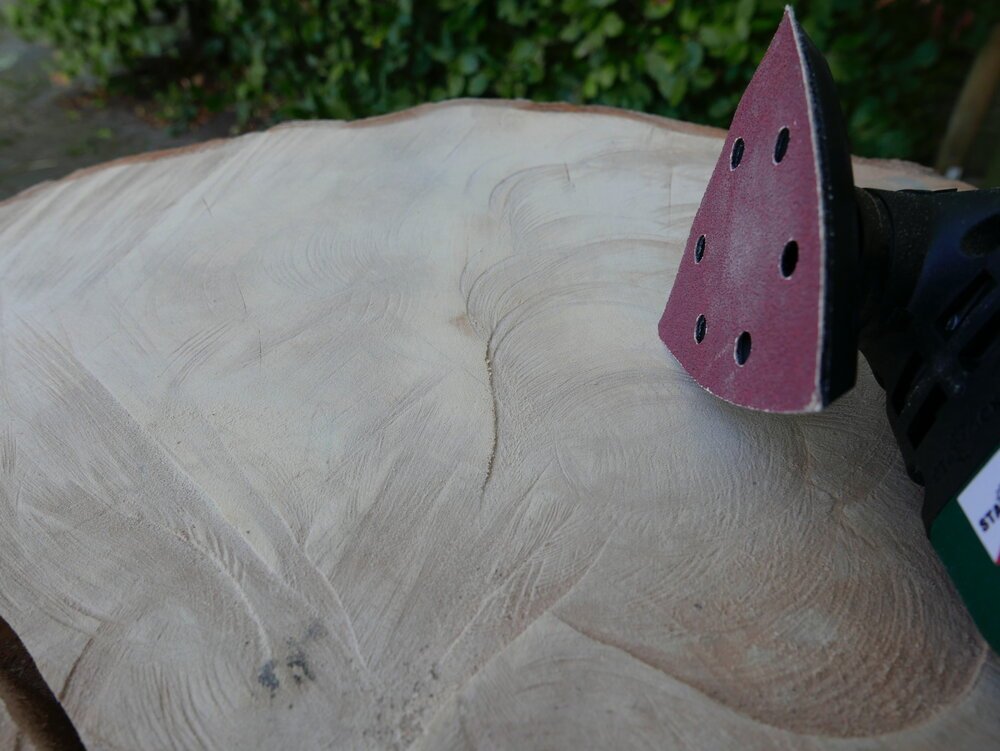
I used a Bosch Multitool for sawing and sanding the surface. After some hours of work, both sides of the wood where smooth enough to saw the slab of wood into the pieces designated by the design.
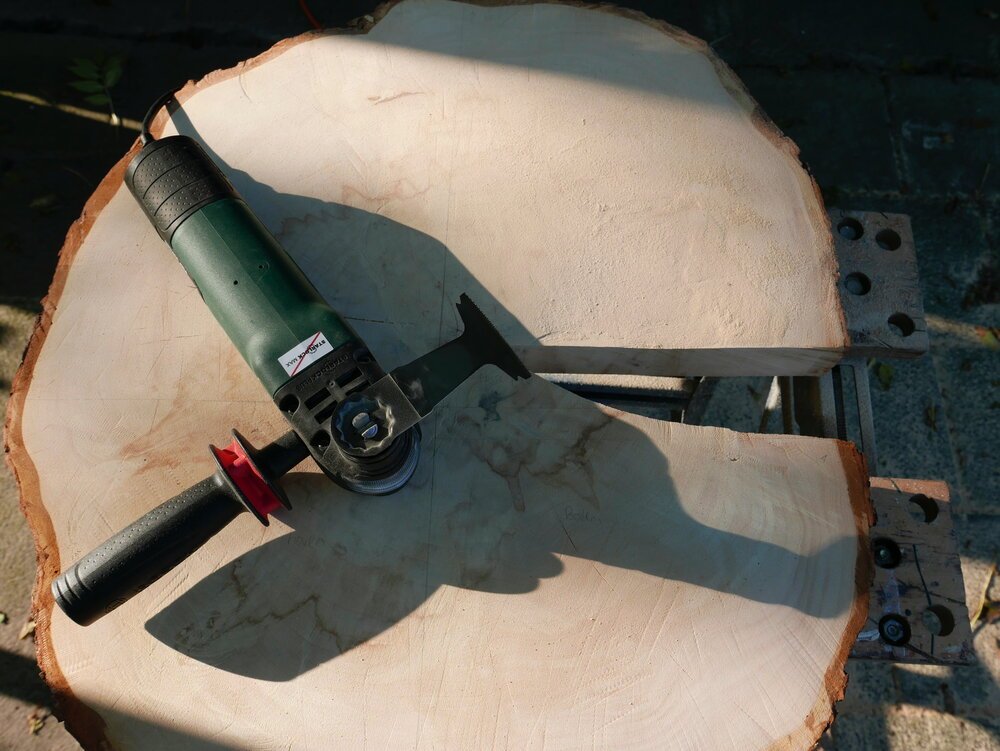
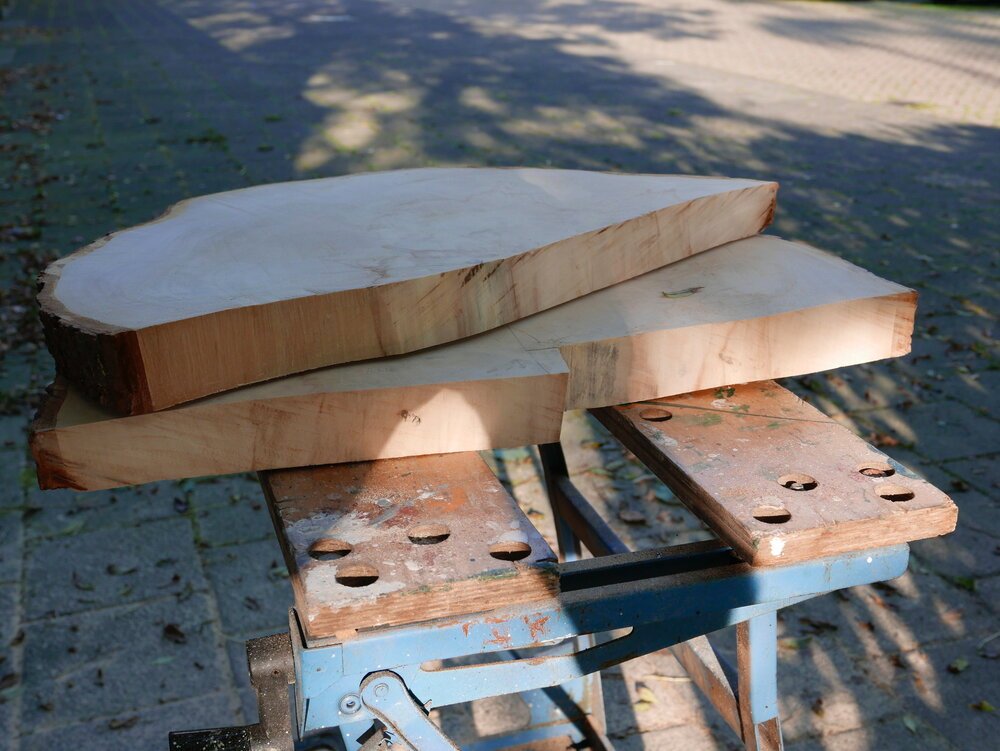
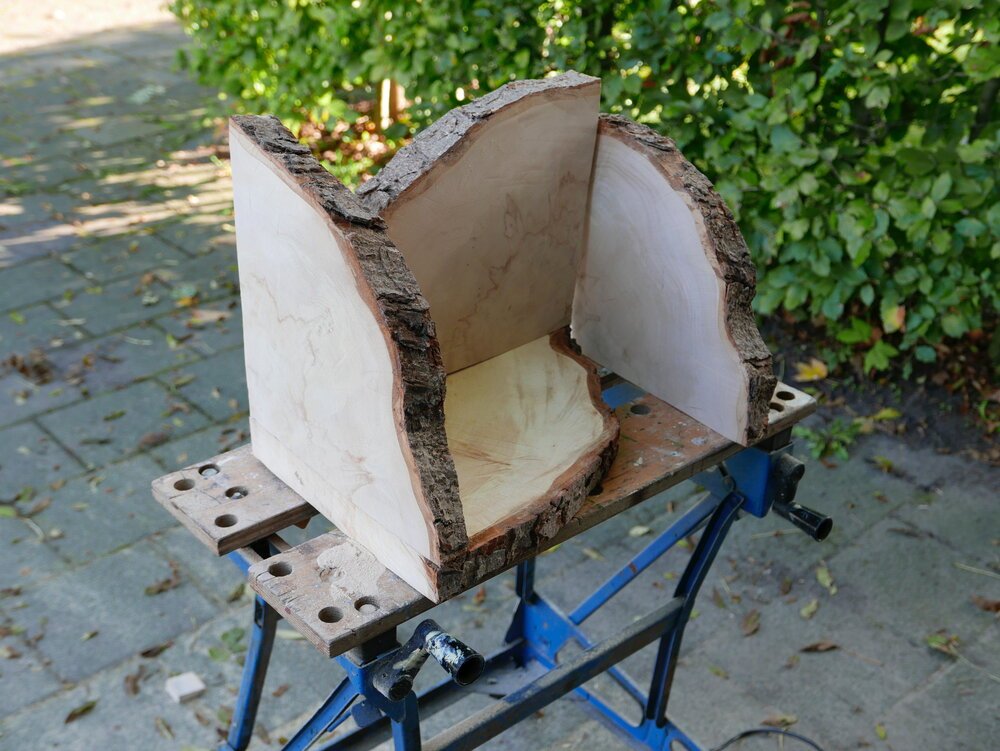
Sticking it together
In line with the design I wanted to connect the pieces witouth any visible means, no screws or metal pieces.
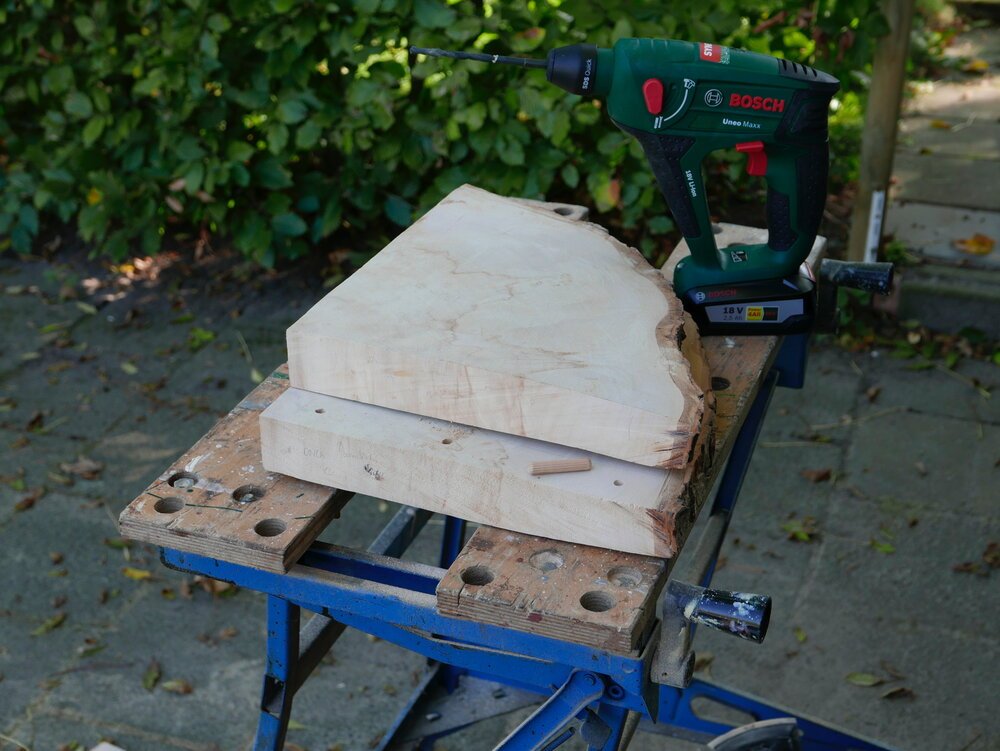
I drilled holes and used wooden pins to achieve enough strength (in combination with glue).
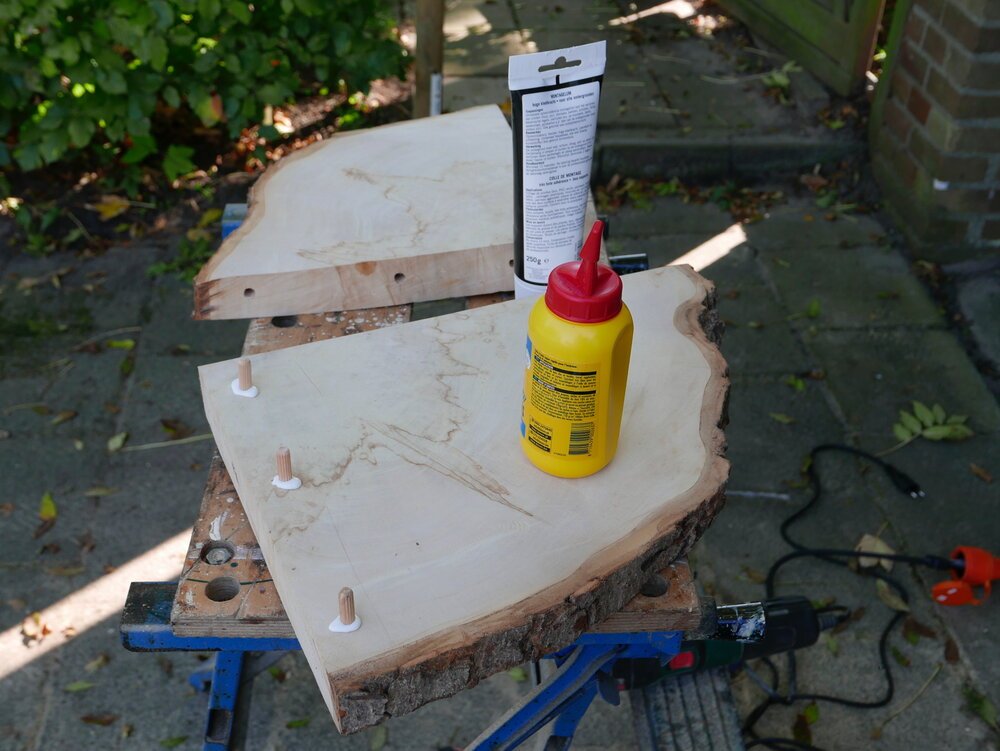
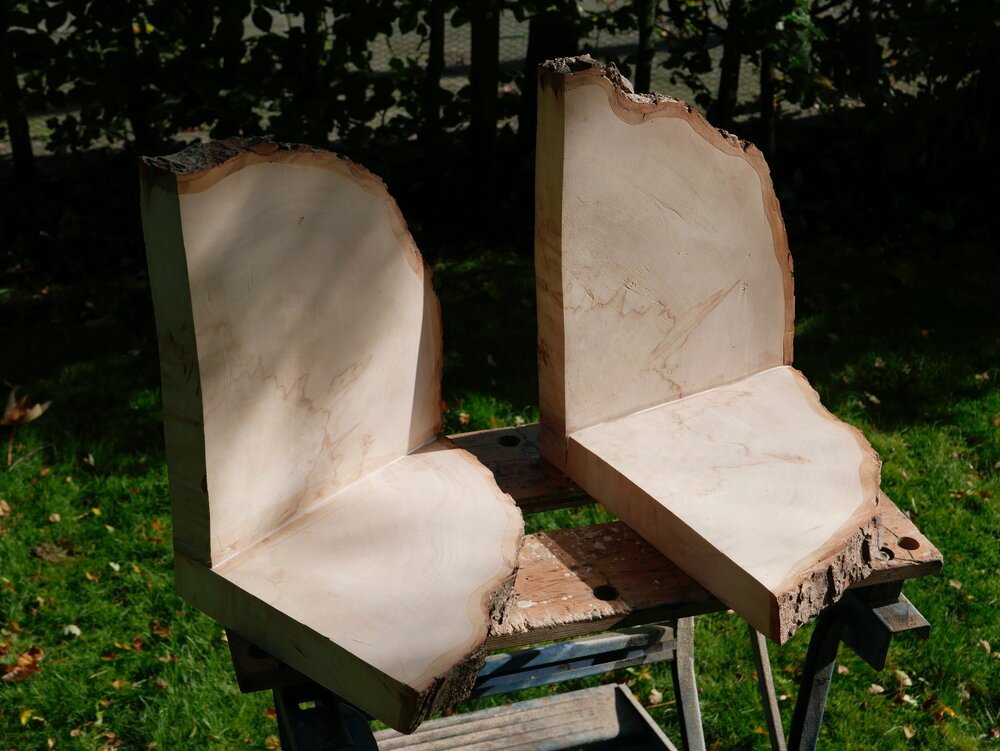
After glueing the two angled pieces I let them dry in the afternoon sunshine.
Transparent Lacquer
As a product of nature wood has an interesting texture because of its nerves. In this particular tree you could see the "year rings" in the wood. Due to changes in the seasons and weather, the speed of which the wood grows differs from time to time. I wanted to maintain these lines of life and chose a transparent lacquer.
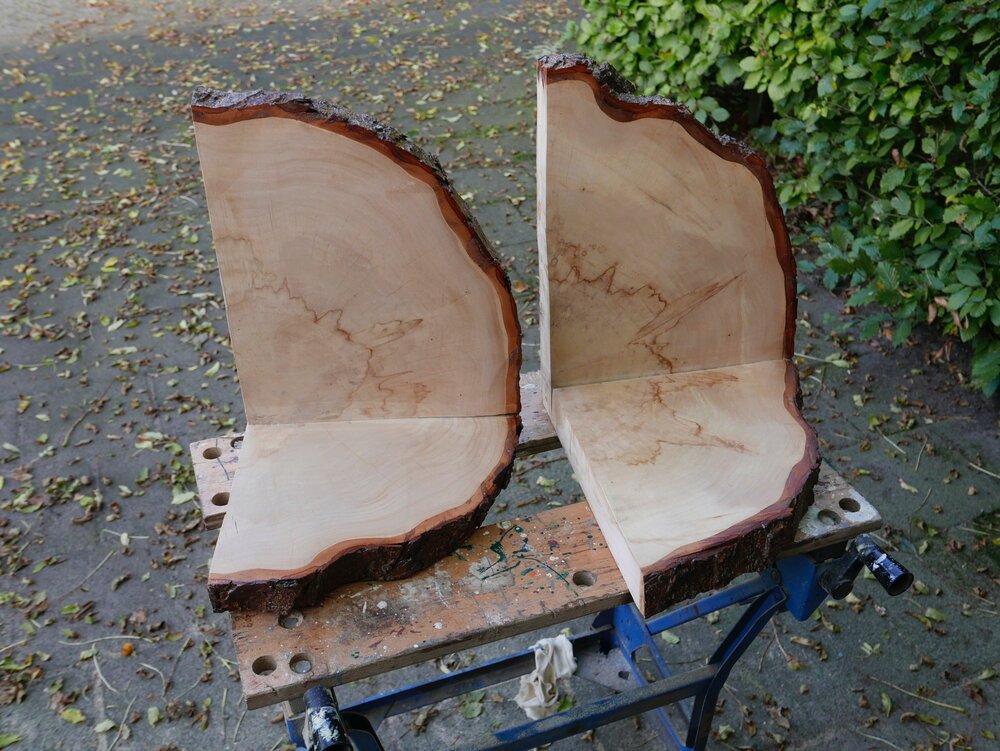
Again and again
After applying the lacquer I sanded the surface again and again. Every time I used a finer sanding paper; I stared with 60 and went all the way up to 400.
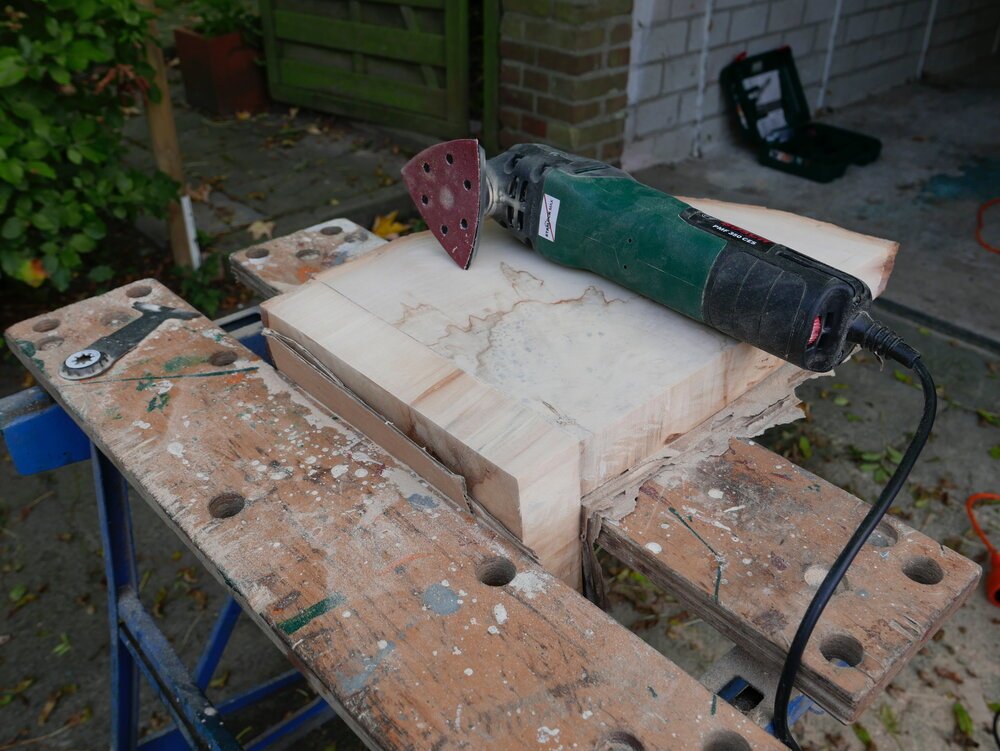
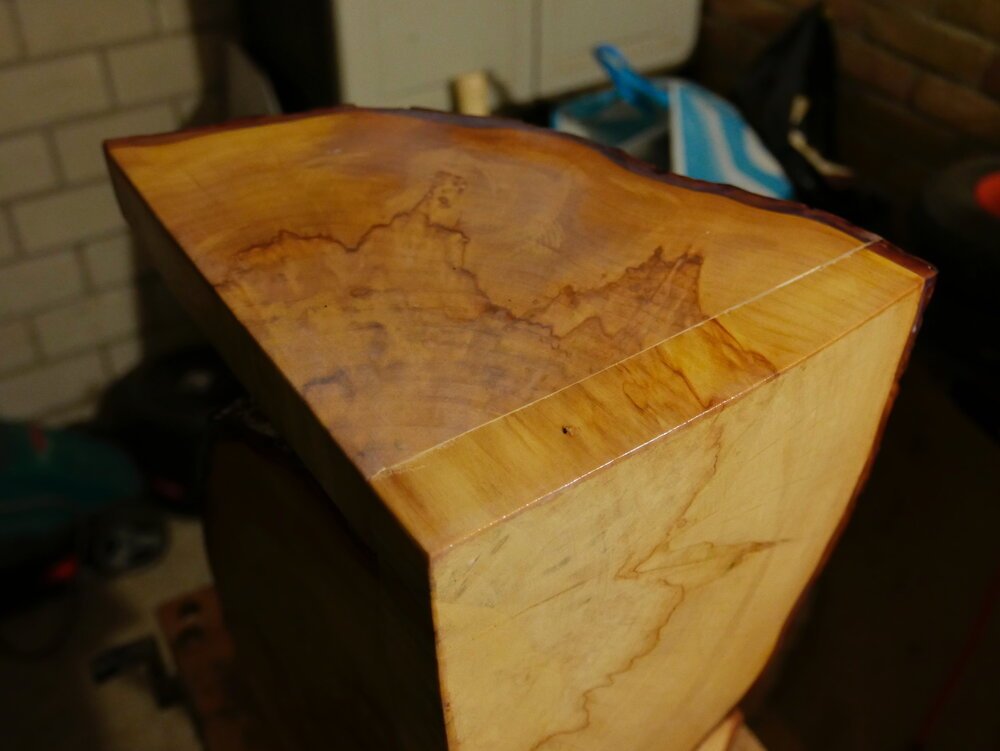
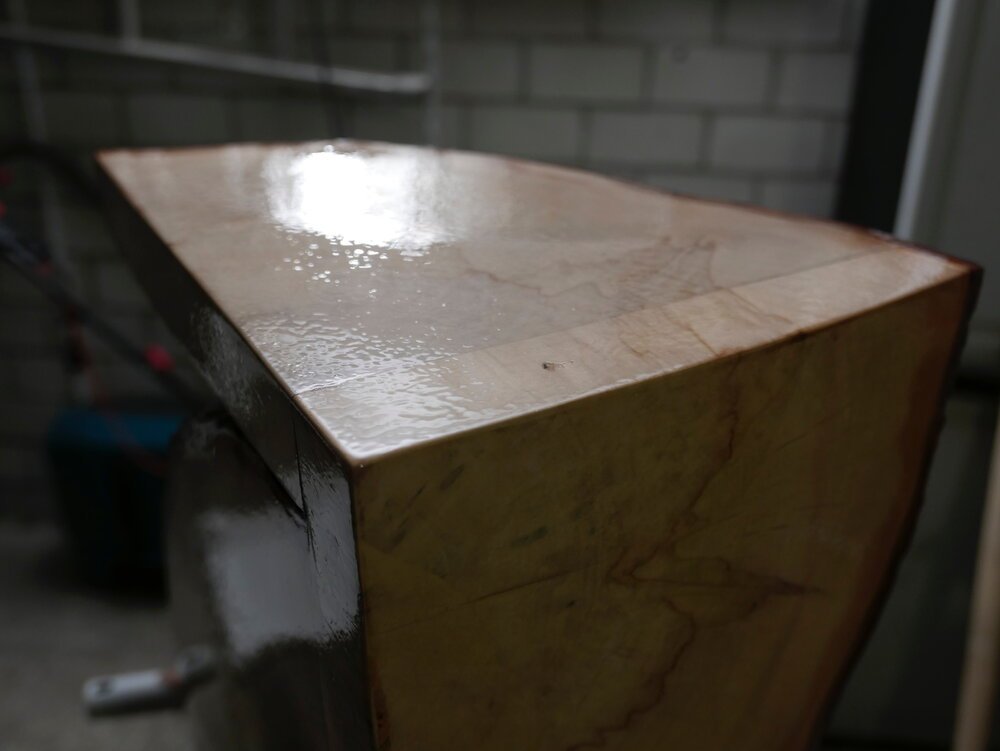
Result
Many hours later the result is a night stand with a very smooth surface in an original design.
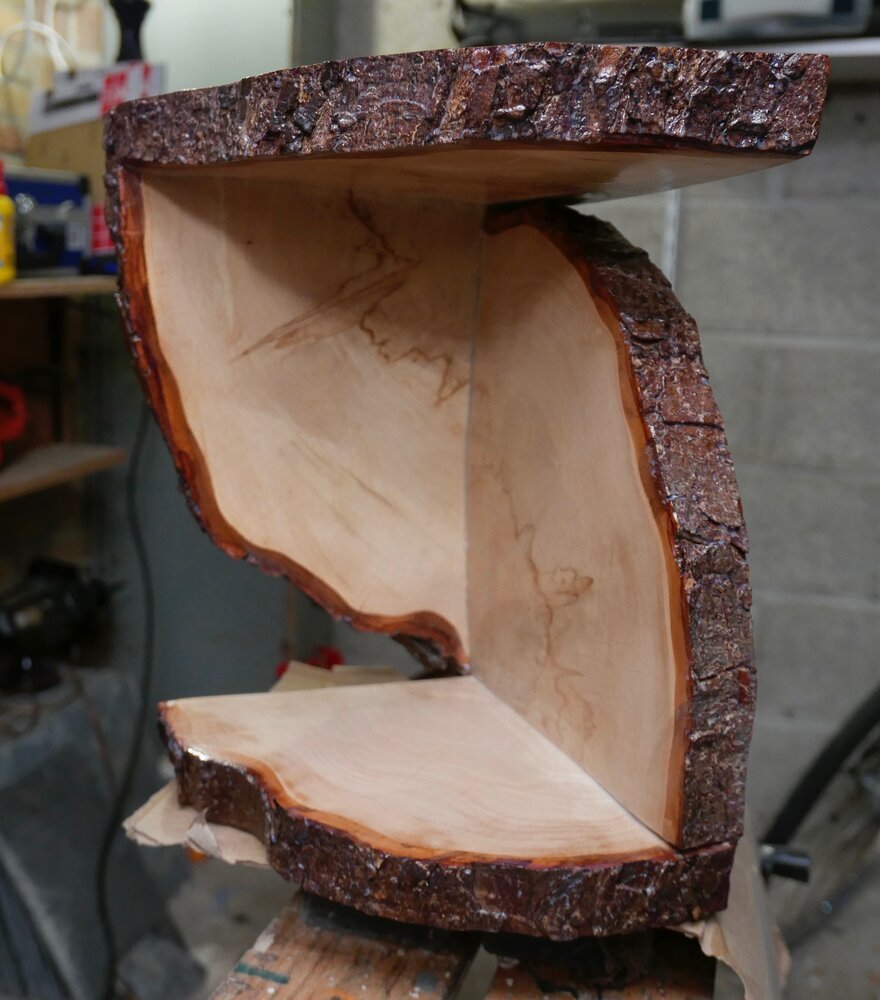
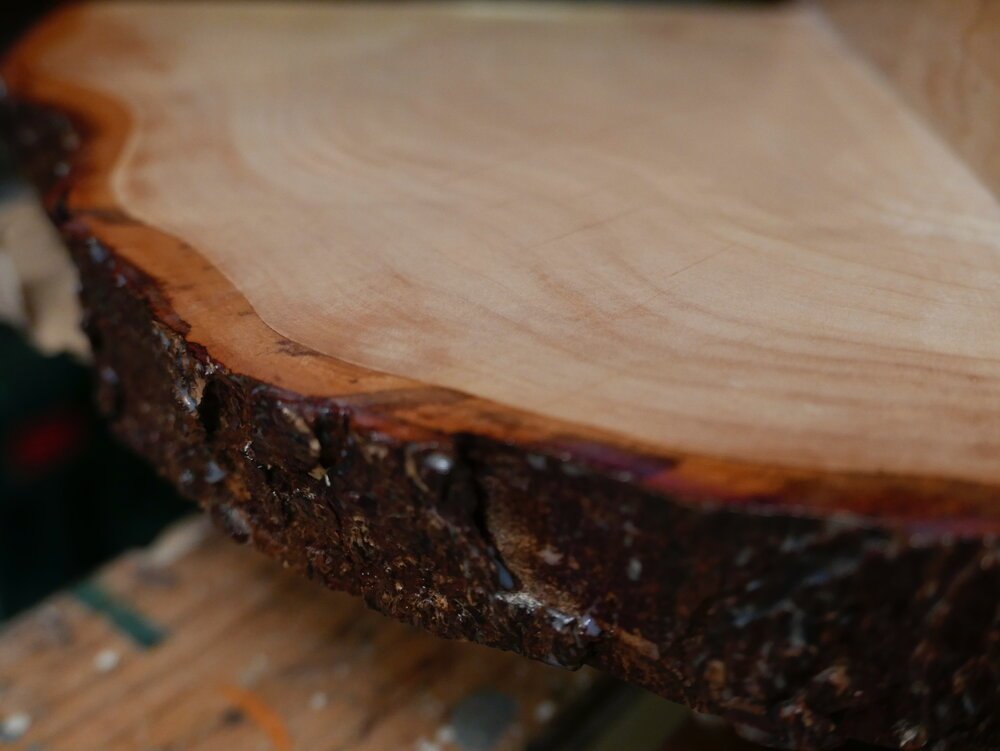
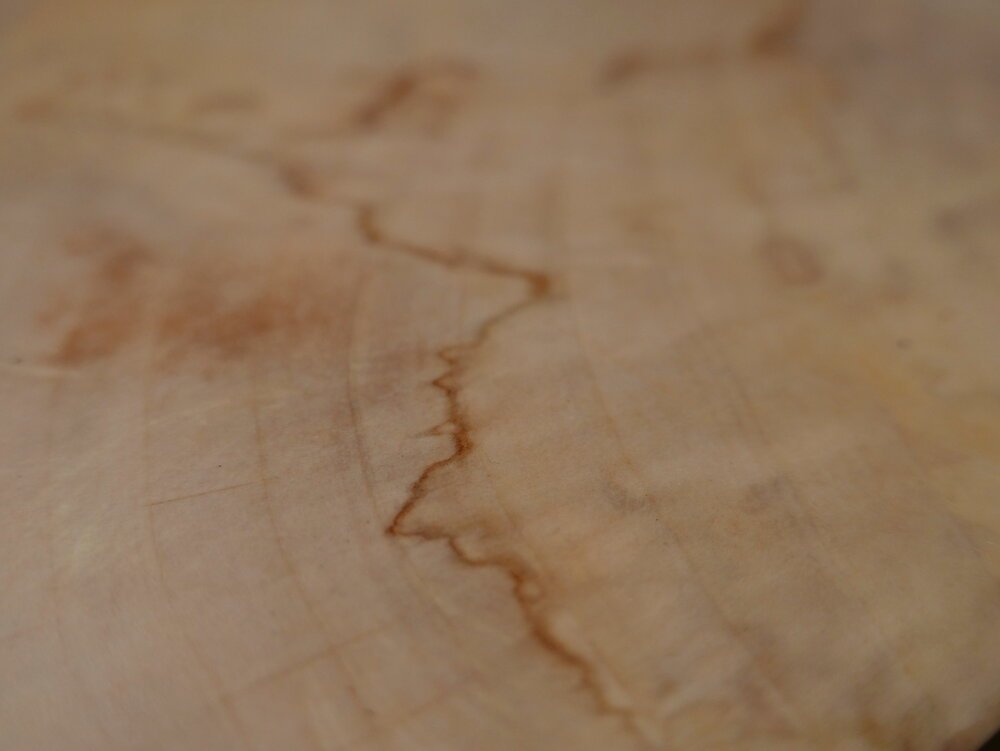
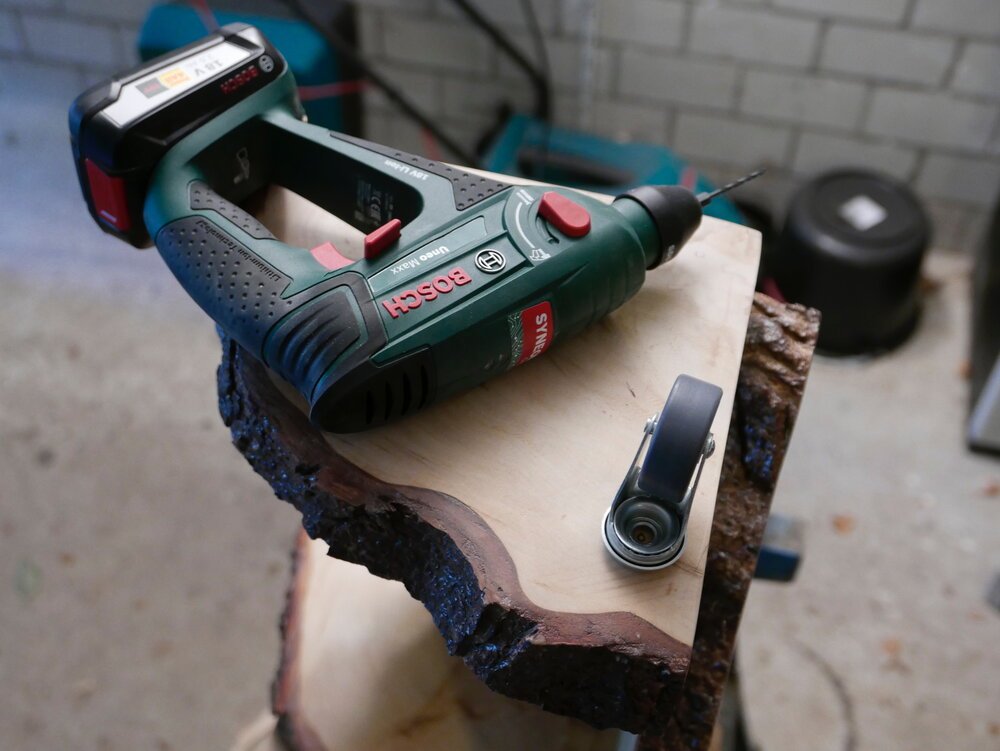
I mounted three wheels for easy moving (and some additional height). I choose three to prevent the stand from wobbling. I used metal rings to allow fine-tuning the angles (as the wooden slab isn't perfect flat).
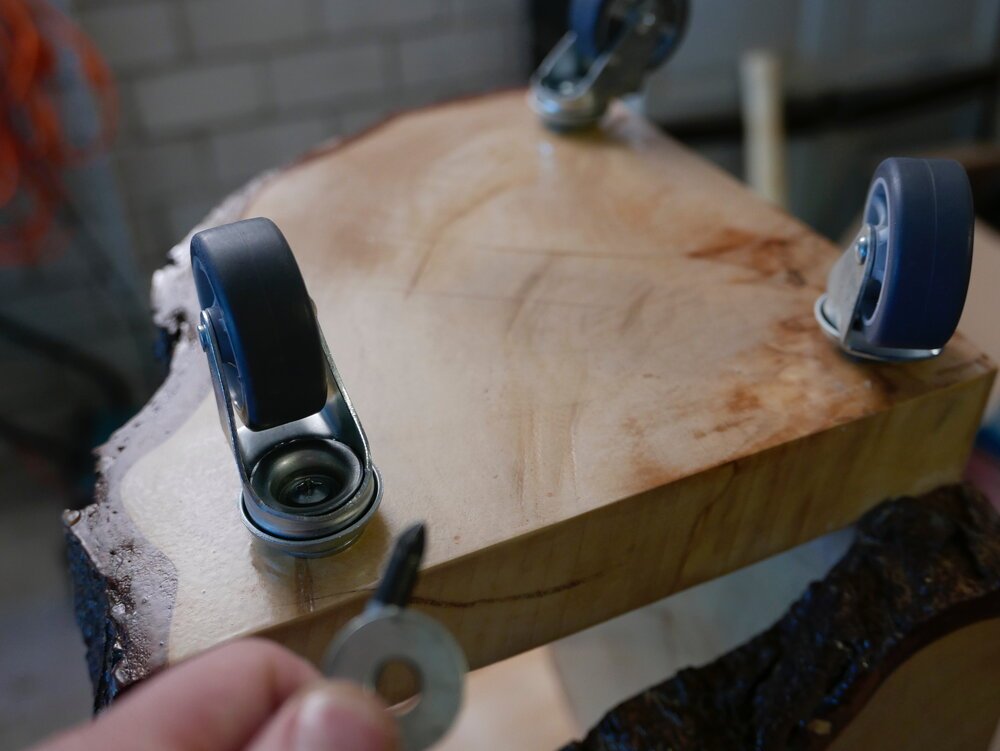
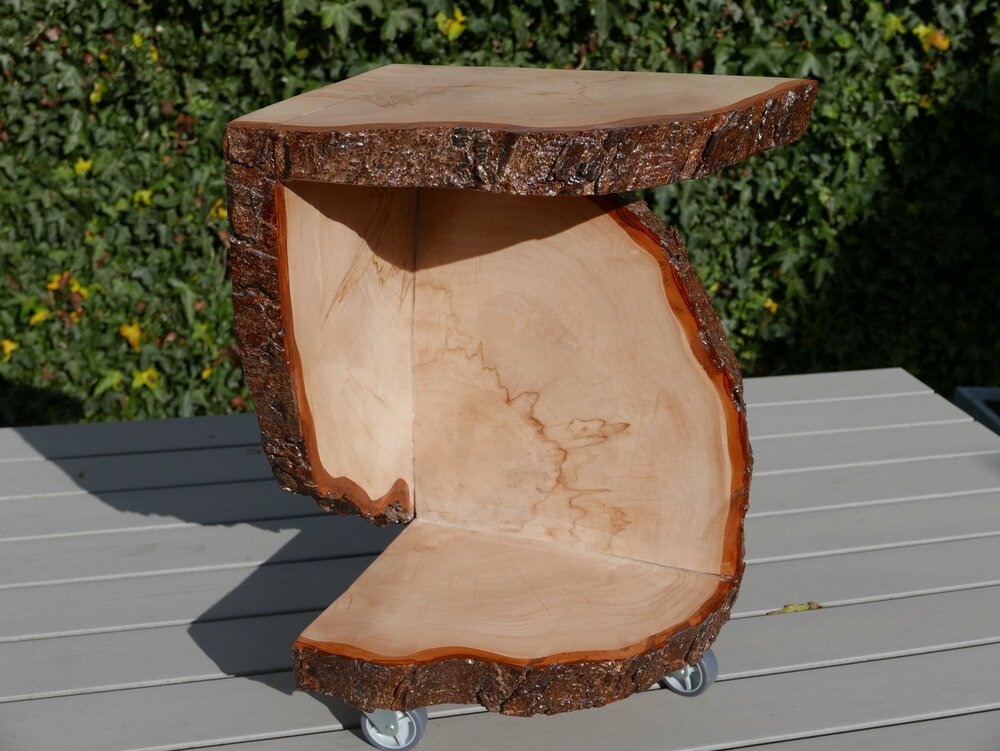
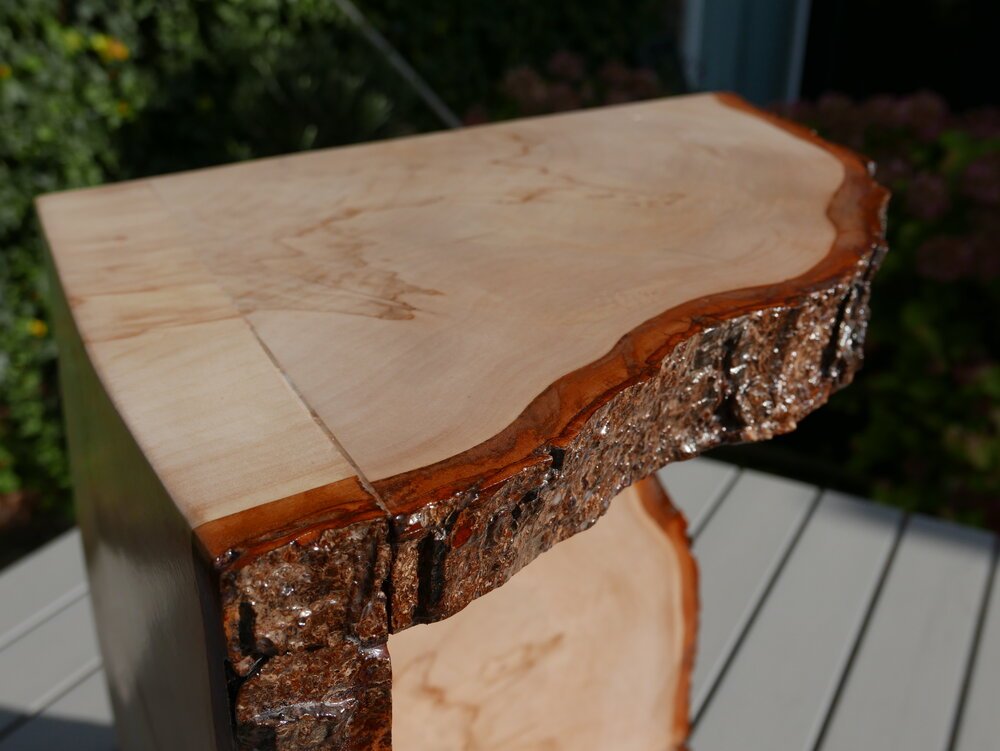
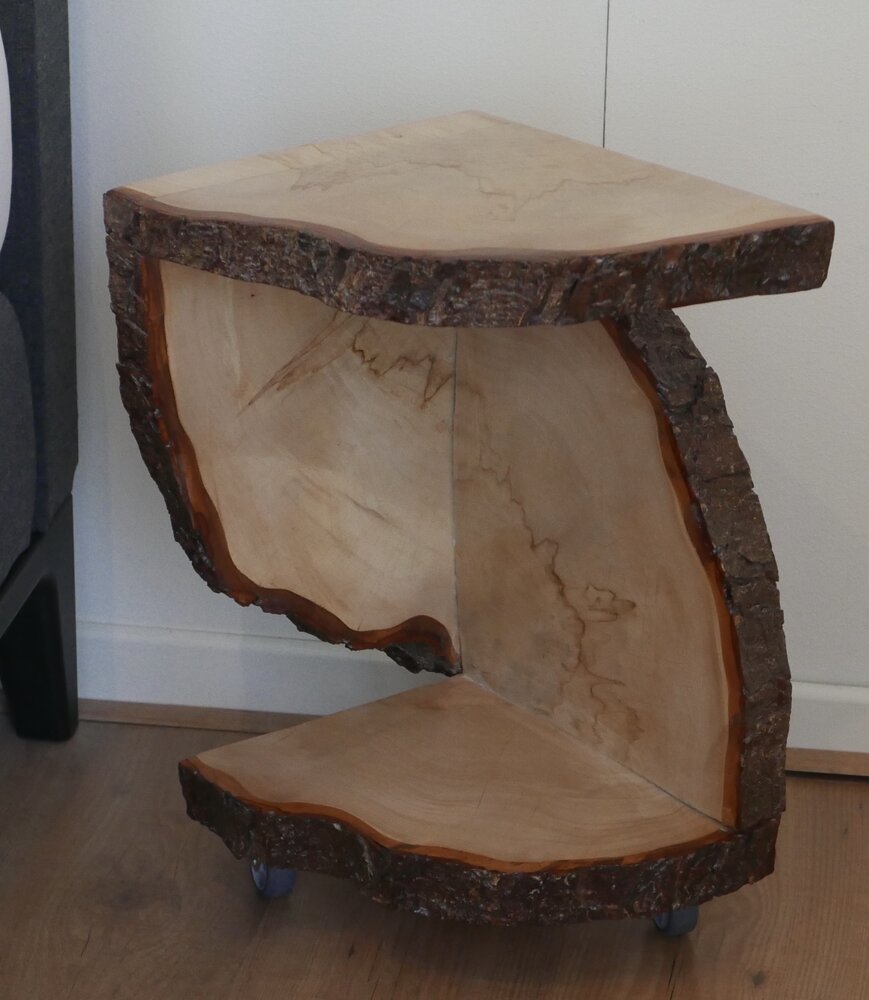
It was an interesting experience doing some "do it yourself" wood design. Just take your time and don't rush yourself. I had a lot of fun and can recommend it to anyone. In fact I had so much fun that I probably will do it again!
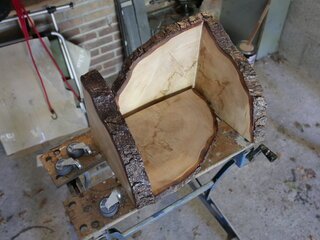
Download
If you enjoy reading offline, this article is available for download:
Translations
This article is available in the following languages:
RSS / Atom
Grab one of the feeds to stay up to date, the feeds contain the full posts:
